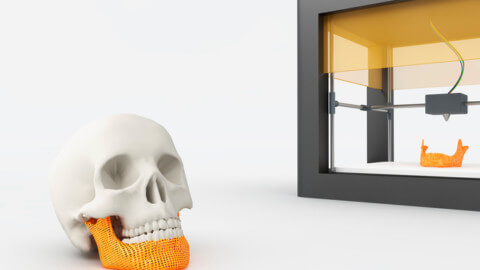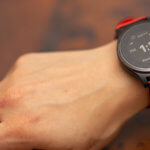Fast Healthcare Interoperability Resources (FHIR) is a standard for exchanging health care information electronically. The standard was created by health care standards organization called Health Level Seven International (HL7).
HL7 and FHIR
Considering the advent of big data and data acquisition, with health care records becoming digitalized lately, and patients moving in the health care surroundings, it is important for the health information to be made available, discoverable, accessible and understandable.
Furthermore, automated clinical decision support and other machine-based processing are better supported if data is structured and standardized. To address these obstacles, HL7 produced health care data exchange and information modeling standards for over 20 years. FHIR is the new set of guidelines based on emerging, and current industry approaches through defining and implementing HL7 v2, HL7 v3 and the RIM, and CDA. FHIR itself can be used as a standalone standard or can be used in partnership with other standards.
What FHIR aims to accomplish?
- Simplify implementation without sacrificing information integrity;
- Leverages existing logical and theoretical models to provide a consistent, concise and relatively easy ways to implement, and rigorous mechanism for exchanging data between health care applications;
- Has inbuilt processes for traceability to the HL7 RIM and other relevant content models;
- The information contents and structure are defined as the core information set to be shared by most implementations.
Building blocks of FHIR are called resources. All resources share a common set of metadata, a common way to define and represent them, and a human readable part. Composition approach is used to model FHIR.
| Recommended for you | |
| Achieving interoperability in eHealth systems in Europe | |
| Role of policy in digital health revolution | |
| Regulatory and policy framework for digital health |
Comparisons between FHIR and other standards
| A | B | C |
|---|---|---|
| FHIR | HL7 V2 | |
| Event based message paradigm | Yes | Yes |
| Granularity | Idea of resources. | Idea of “segments.” |
| Extensibility | Data extension can appear at any level. | Usage of z segments. |
| Inter-version compatibility | Strict processes for maintaining forward and backward compatibility. | Strict processes for maintaining forward and backward compatibility. |
| Human version readability | Yes | Rare |
| Update behavior | Updates are communicated by sending a complete copy of the instance with the new data filled in. | Updates are communicated by sending a complete copy of the instance with the new data filled in. |
| Optionality & Profiles | Similar degree of flexibility at the international standard level. | Similar degree of flexibility at the international standard level. |
| A | B | C |
|---|---|---|
| FHIR | CDA | |
| Clinical document focus | No limitation on their content. | Limited to “clinical” use cases. |
| Human readability approach | Yes | Yes |
| Clinical Statement vs. resources | All clinical (and non-clinical) content in a message is handled by referencing existing resource definitions | Expressed using a complex and extremely abstract model based on HL7’s “Clinical Statement” project |
| Templates and Profiles | Meaning is defined by the resource | Relies on the presence of templates |
| Markup language | Makes use of a constrained set of XHTML which is somewhat more expressive than the CDA markup | Defines its own XML syntax for narrative content, loosely based on HTML |
| A | B | C |
|---|---|---|
| FHIR | HL7 V3 | |
| Reference model | HL7 RIM is used for some, but not for all content. | HL7 RIM is a core aspect of the HL7 v3 methodology. |
| Codes | True to some extent (only for business purposes) The Value set is just another type of resource. |
Places considerable reliance on coded attributes to convey the meaning of instances. The Value set is used to define set of codes. |
| Granularity & referencing | FHIR models are divided based on whether the objects they represent can be considered to “stand alone”. | Broken into three main types – wrappers, payloads and Common Message Element Types (CMETs). V3 models are divided based on the expectation of reuse. |
| Design by constraint | FHIR resources do not attempt to represent all data elements that could possibly be used in a space. Instead, only those data elements that are expected to be used by “most” implementations within the scope of the resource are considered part of the core resource definition. | V3 models extremely broad in their coverage, and each model produces its own schema and, in most cases, constrained schemas are not strictly wire-compatible with the schemas of the model being constrained. |
| Null flavors | Null flavors are only introduced in the core specification in those circumstances where it is expected that most systems will need them. Where needed, the flavors are constrained to those relevant to that element. | V3 introduced the concept of “null flavor” on almost every attribute and data type property in its models. |
FHIR is easier and faster. It reuses technology and community, readily available, with its community highly active. These factors shall drive down the cost of integration and interoperability. The existing and the competing approaches will have to match the price or disappear as it is launched.
Outlook into the future
It is being adopted quickly by Government projects and large consortiums (Argonaut, S4S, HSPC). In addition to that, European national projects & Health Records, National Terminology Service, Many vendors and open source projects are presently integrating it into the current system. It is a powerful & flexible tool to help physicians determine the chain of events that led to death. It integrates into doctor’s workflow, saves time, improve accuracy, and advance medical research and improve care. It also provides history at a glance and probable causal links. It also addresses childhood obesity.
SMART on FHIR is a project funded by The Office of the National Coordinator for Health Information Technology (ONC), which builds an app platform for health care allowing innovation, creative use of data within the EHR, and enables third-party plug-in apps and support apps to be chosen by clinicians. SMART on FHIR specs provide means for healthcare organizations or developers to access discrete clinical data—such as medications, problems, lab results, immunizations and patient demographics. Extra Hop Wire data Analytics is also interested in implementing FHIR in the current health sector.
We can see FHIR offers a significant hope to revolutionize the area of health and make it more patient friendly, and accessible. It is a response to the call of the hour.
Image credit: www.istockphoto.com

















